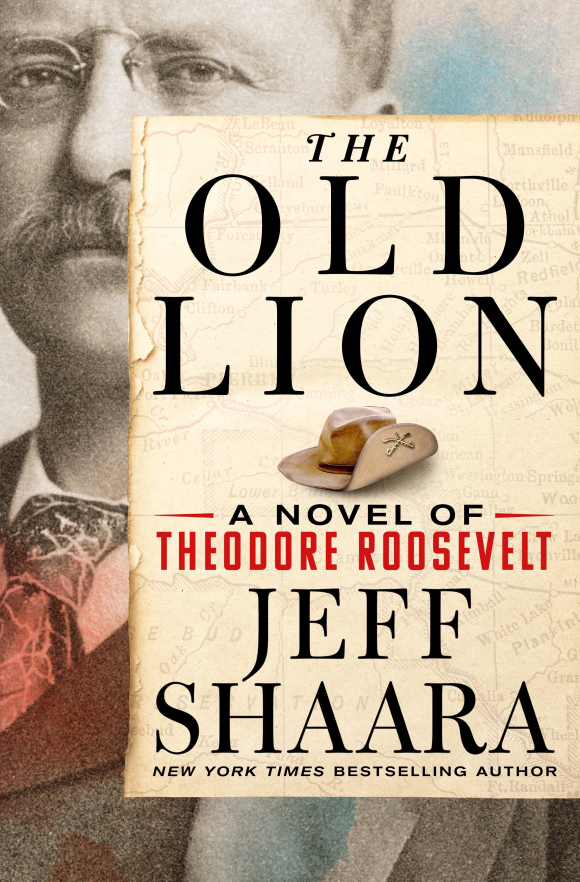The amazing life of Teddy Roosevelt

There are plenty of reasons why Theodore Roosevelt (1858-1919) is included along with Washington, Jefferson and Lincoln on the Mount Rushmore National Memorial.
Sickly as a boy with asthma, his wealthy father provided him with a home gymnasium, hired coaches, and urged him to learn to box. He developed an early interest in wildlife and would later as president set aside 230 million acres as parkland for the enjoyment and edification of the American people. He made his mark at Harvard as a bit of an eccentric and an entertaining conversationalist. After graduation, he married a young woman he adored, Alice Lee, who died on Valentine’s Day, 1884, after giving birth to their first child. His mother died only hours earlier on the very same day and in the same house.
Bereft, Roosevelt fled big city life and the New York legislature for his ranch in the Badlands, where he lived as a cowboy. Once he even tracked down a trio of thieves, took them prisoner, and escorted them to the law on a three-day journey of cold and privation.
On returning East, Roosevelt gained a reputation for honesty and fearlessness in politics. Over the next 20 years, he served in a variety of offices, including police commissioner of New York City, Assistant Secretary of the Navy, governor of New York state, vice president, and president. During this time he also demonstrated personal bravery while commanding the famous Rough Riders at the Battle of San Juan Hill in Cuba during the Spanish-American War.
With the assassination of Warren Harding in 1901, Roosevelt entered the White House. As president, he launched one of the world’s greatest engineering feats, the building of the Panama Canal. He won the Nobel Peace Prize in 1906 for helping to end the Russo-Japanese War, helped to better racial conditions in the United States by inviting Tuskegee Institute’s Booker T. Washington to dine at the White House, worked on a dozen issues regarding labor, management, and corporations, and brought an excitement to the capital rarely seen before or since.
After a failed attempt at a third party presidential run in 1912 — the Bull Moose party was named after him — Roosevelt embarked in 1914 on an expedition to the Amazon, where sickness, the heat, and the sheer exhaustion of fighting the river and the jungle left him a physical wreck. He died four years later.
In “The Old Lion: A Novel of Theodore Roosevelt” (St. Martin’s Press, 2023, 480 pages), Jeff Shaara covers these events and more from the life of this extraordinary American. Here is an excellent introduction for young and old to this human dynamo, his struggles, and his many achievements. It provides as well a pleasant visit for those already familiar with Roosevelt from his “Autobiography” or the many biographies written about him.
In his introductory remarks to his novel, Shaara writes, “One thing I have learned through my career as a storyteller is that getting it right means accurately, to the extent possible, recounting the events of the time.” The author of many other historical fictions, Shaara has clearly followed that maxim in “The Old Lion.” The main characters lived and breathed during the lifetime of Roosevelt, and their accomplishments and failings are a part of his story.
As a novelist, Shaara was clearly drawn to the most adventurous of Roosevelt exploits: his time in the Dakotas, his command of the Rough Riders, and his dangerous exploration of the Amazon.
In the mid-1880s, as Shaara demonstrates, the Dakota Badlands were no place for the weak. There Roosevelt, whom the rough settlers sometimes called “Four Eyes” because of his glasses, won the admiration and respect of other cattlemen for standing up to bullies and for being able to endure, often with a smile, all the misery the raw land could throw at him. The tough people of this place also won Roosevelt’s respect. For the first time in his life, he was truly out and about among the common people, a circumstance which he later credited with helping him win the presidency.
The Battle of San Juan Hill also helped boost Roosevelt into national politics. He became a popular folk hero for his exploits during the Battle of San Juan Hill, a status that he earned through his bravery on the battlefield and the care he took of his men. The Rough Riders, a loose coalition of Ivy Leaguers, cowboys, and other men of all backgrounds, are representative of the people who would later adore him as president.
Roosevelt’s reasons for making the arduous journey on the Amazon were varied, but the chance for one last adventure of his lifetime was high on that list. Unfortunately, the rigors of that expedition nearly cost him his life and left him in poor health for the years remaining to him. As Schaara writes, his physical condition on this trek became so weakened that he asked to be left behind, so that the rest of the party might escape the jungle and survive. Colonel Rondon, leader of the expedition—he eventually explored more of the Brazilian backcountry than any man before him—refused and brought the president back to safety.
Hermann Hagedorn, who appears in “The Old Lion” as he was in life, a journalist and a chief biographer of Roosevelt, honored the man after his death with these words:
“And so it was that the scarred body of a hero was laid to rest. But the spirit of Theodore Roosevelt did not sleep. It stalked mightily through the hearts of his countrymen, raising dead souls to life.”
(Jeff Minick reviews books and has written four of his own: two novels, “Amanda Bell” and “Dust On Their Wings,” and two works of nonfiction, “Learning As I Go” and “Movies Make the Man.” This email address is being protected from spambots. You need JavaScript enabled to view it..)
Leave a comment
1 comment
-
When your article claims Roosevelt became president after Warren Harding’s assassination, I automatically assume you have no idea what you’re talking about historically.
Sunday, 11/17/2024





